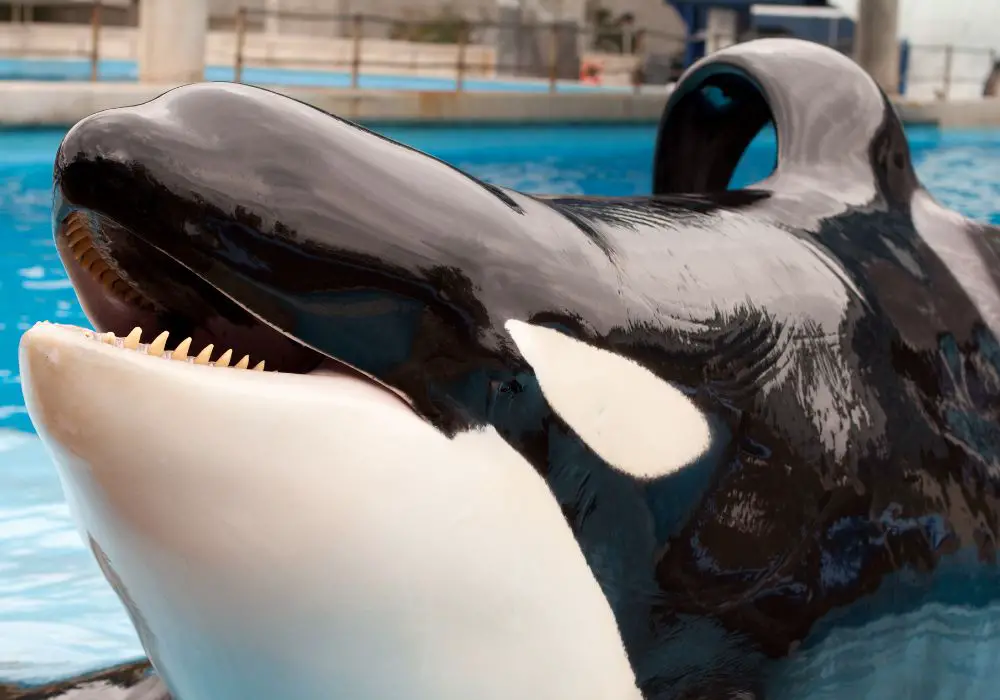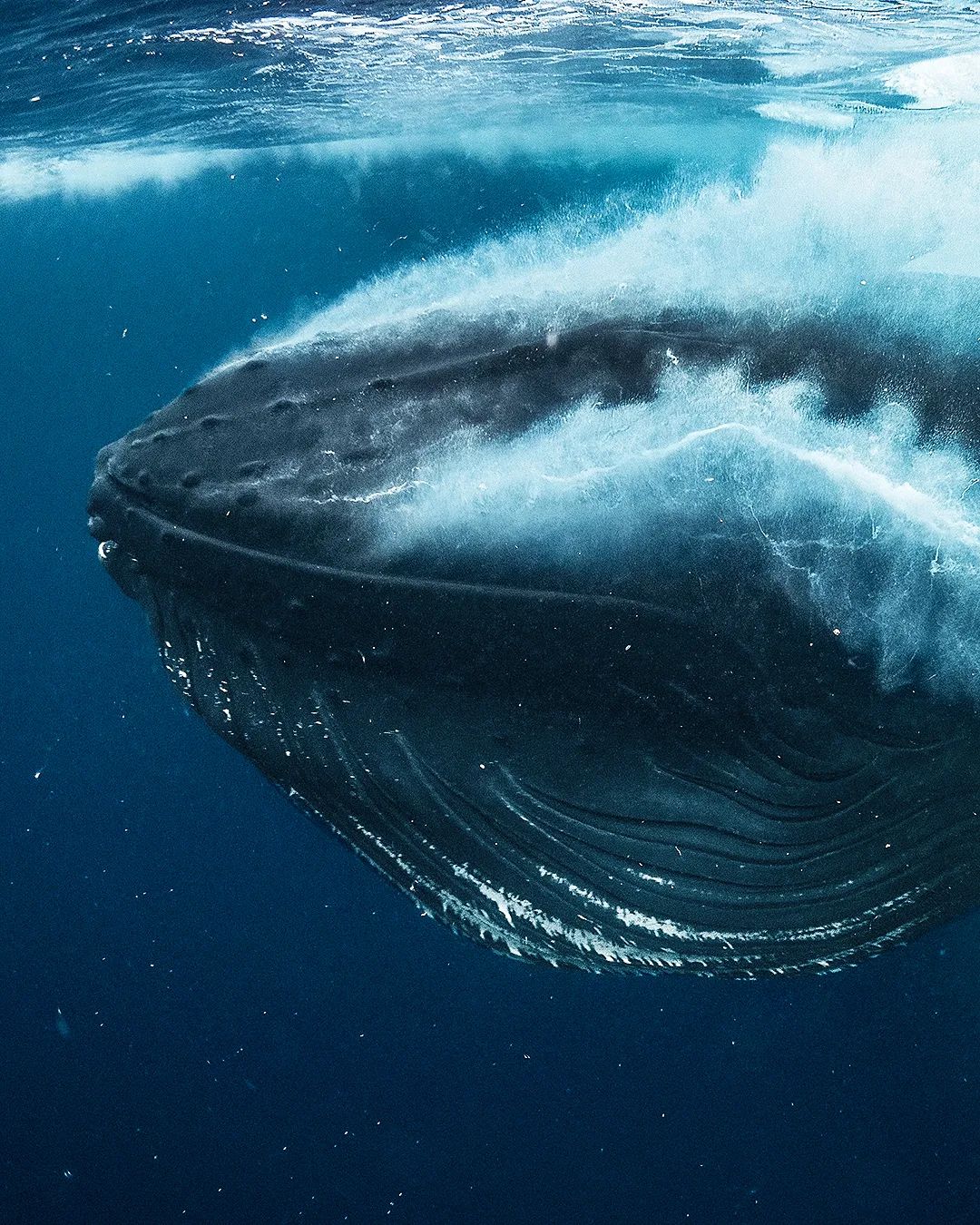While we understand that you are interested in finding out how many teeth a whale has, are you aware that not all whales have teeth?
That’s right, while some whales possess a complete dentition, some others are either completely toothless or possess a very scanty dentition.
To answer your question, a toothed whale can have as many as 240 teeth. This could be more depending on the species the whale belongs to. Some species with fewer teeth can however only have one or only two teeth in total.
This difference is due to the dental pattern of each whale; while some have teeth in their upper and lower jaws, others only have them in their lower jaw.
So, how can you identify these different whale species by their dentition? In this article, you’ll learn all there is to know about whales and their dentition.
How Important Is a Whale’s Tooth?
The teeth are quite essential for toothed whale species as they use them to capture their prey. However, many whales in this category can still feed without them, and in fact, a lot of the toothed whales in the ocean today have fractured jaws and worn-out teeth.
An interesting fact about a whale’s teeth is that while many other mammals first have their baby teeth before the adult ones come in, whales have it differently. They grow their teeth once and keep them for life.
Also, in regular mammals, there are four tooth types shaped for specific usage: molar, premolar, canine, and incisor, all shaped differently. However, whales have the same peg-like tooth appearance all over.
Now that we’ve answered your question, let’s move on to the different classifications of whales according to their dentition
Types Of Whales According to Their Dentition
From research, we discovered that although whales are grouped into several categories, for the purpose of this article, we are only interested in their classification according to dentition.
Hence, by their dentition, whales are classified into two major groups,
- Toothed Whales and
- Baleen Whales
1. Toothed Whales

Toothed whales are whales possessing one or more teeth. These whales use echolocation to locate their prey and navigate through the water.
Echolocation works by sending out ultrasounds from the whale’s nasal passage to a possible prey, and in return, they receive a signal that lets the whale know the prey’s size, location, and shape.
These toothed whales in this suborder sometimes catch their meal with their teeth and swallow the prey whole, often using this to assert dominance around them.
Hence, for this reason, they are classified as the hunters in the group. Their choice of edibles includes giant squid, fish, crabs, octopus, and many other ocean creatures.
Here’s a list of some common Toothed Whales
- The Beluga Whale
- The Narwhal Whale
- The Dwarf
- The Pygmy Sperm whale
- The Orca Whale
- The Harbour Porpoise Whale
Characteristics of Toothed Whales
Identifying whales in this category is relatively easy. How so, you ask? Well, every whale in this category has a set of features that sets it apart from those in the Baleen category.
Let’s now explore features that are common to these toothed whales.
- Slightly Large Size
Although toothed whales may not grow as big as their baleen counterparts, they are still larger than many other mammals. They range from 4.5ft (1.4 m) and 120 lb. (54 kg) to (66 ft) and 55t (61-short-ton) in size.
With the exception of the sperm whale, female whales in this category are larger than males.
N.B: Of all the Toothed whales, the Sperm Whale is the largest, while the largest tooth discovered in a whale belongs to a Narwhal Whale.
- Presence of Teeth
Another feature common to many toothed whales is the type of dentition they possess. These whales have cone-shaped teeth, which they rarely use since they swallow their prey whole without chewing.
As stated, these toothed whales can have below or above 240 teeth.
Whales like the sperm whale have teeth in the lower dentition alone, and the Narwhal only has one tooth that it rarely uses.
- Gliding Body Structure
The gliding bodies that make it easy for them to navigate through the ocean with their limbs, now reformed as flippers, is yet another feature that makes identifying toothed whales easy.
These whales possess stiff necks, a big tail fin, and bulging heads with only one blowhole. However, they lack external ear flaps.
In addition, you will find their eyes glued to the side of their heads, and they also possess long beaks.
While most species in this category have the same structure, the sperm whale is an exception. This is because sperm whales have a series of roundish humps on their back with flippers in the form of a paddle.
Hence, compared to the other toothed whale, they possess a sturdier appearance; their defining feature is their large square head and narrow lower jaw.
- Sharp Teeth
Toothed whales are characterized by their pointy and sharp teeth, and even though they swallow their meal whole, the teeth’ presence helps catch and subdue prey. This feature makes them the hunting species in the whale family.
- Large Population
Finally, you’ll discover that toothed whales are significantly more than the Baleen species, as there are about 77 different whale species in this group. This high number is because the toothed whale species includes dolphins and porpoises.
2. The Baleen Whale

The Baleen whales refer to the group of whales with baleen plates in their mouth. This plate serves as a filter for feeding as an alternative to the teeth they lack.
The method of feeding for baleens is different from that of toothed whales. Baleens open their mouths wide and take in seawater and, with it, their food. After this, they filter the ocean water back out through their baleen by pushing their tongue against the bristles before swallowing the prey whole.
Although all baleen whales are filter feeders, there are slight differences in how some of these species feed. For instance, bowheads and right whales will feed by gliding across the ocean with their mouths half open, but humpback whales and blue whales will fully open their mouths.
However, other whales, like the gray whale, will swim on their sides closer to the ocean bed and then swallow mud and water before they filter crustaceans from the muddy water they took in.
Baleens eat the smaller feeds in the ocean, like plankton. Other baleens also eat other smaller meals like the smaller fishes and different types of crustaceans like the krill and amphipods.
Here are some common whales in the baleen category.
- The north pacific right
- The Pygmy right
- The North Atlantic right
- The common minke
- The Antarctic minke
Characteristics of Baleen Whales
Here are some features peculiar to Baleen whales. These features will help you differentiate them from toothed whales.
- Large Size
In terms of size, baleen whales are much larger than the toothed whales. They grow as big as 6m (20 ft) and 3,000kg (6,600 lb.) to 31m (102 ft) and 190t (210 short tons), depending on the species in the category.
- Small Throat Size
It will interest you to know that the size of a baleen whale does not reflect on the throat size. These whales swallow their prey whole; however, they do not have large throats, so these mammals prefer hunting for smaller prey they can consume at once.
N.B: The Antarctic blue whale, which falls in this category, is the largest animal on this planet.
- Absence of Teeth
The defining feature of a baleen whale is its lack of teeth. The baleen bristles are soft and appear like a curtain over the whale’s mouth, making the name filter feeders appropriate for identifying these types of whales.
The outer non-fringed part of the baleen has a texture similar to a human’s fingernail, while the inner frayed part feels like plastic hair or the long strides of a scrub brush.
- Streamlined Body Shape
Baleen whales have large bodies streamlined with two limbs that are now modified as flippers. The neck of these whales is tightly fused, which makes it impossible for them to turn their heads, and they possess two blow holes.
Furthermore, these layers have an extra fat layer that helps them stay warm underwater and helps them get to deeper depths in the ocean.
- Small Population
Currently, there are 16 different species in this category, which are less than the toothed whales.
Final Thoughts
Whales are different even across the different species in the same category. Hence the reason why they are grouped into two broad categories based on their dentition.
To spot the differences between whales in these two categories and to aid you in identifying one, here are key things to remember.
- Their anatomy
- Their feeding method
- The size of the whale
- The kind of food the whale eats







